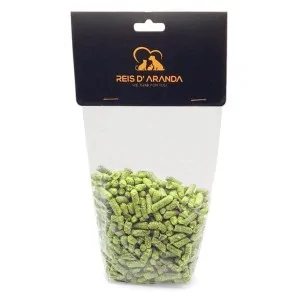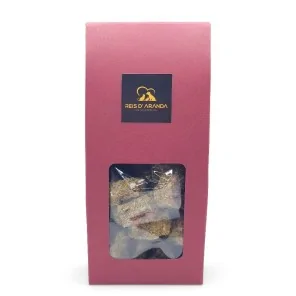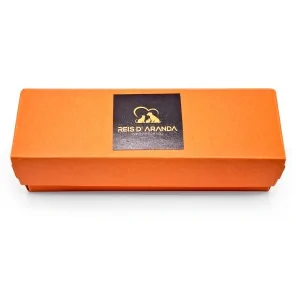The Tornjak originated from genetically homogeneous, almost extinct, indigenous shepherd dogs. These dogs have...
WHAT CAN MY RABBIT'S OR GUINEA PIG'S POO TELL ME ABOUT ITS HEALTH?
INTRODUCTION
Faeces provide us with clear and strong signals of the existence of possible diseases ranging from intestinal infection to colon cancer, and this is not only limited to people but also to animals: the colour, the consistency, the shape... these are often the first signs that something is going on.
THE SHAPE OF THE POO
The shape of the faeces can give us a lot of information, for example in rabbits we can find two different forms of ‘normal’ faeces:
- BALL SHAPED FECES: A healthy rabbit usually defecates small round balls, uniform and dark in colour, their smell is not too noticeable, they do not stain and on occasions they can have a blonder tone which indicates that the rabbit eats a lot of hay, being known as ‘golden poo’.
- FECES IN THE SHAPE OF RACIMO: These are soft faeces of double digestion and are called ‘cecotrophs’, they are tiny little balls joined together which look like bunches of grapes and are formed in the cecum, it is not usual to see them because the rabbits ingest them as soon as they come out so that they can absorb all their nutrients.
- NORMAL COBAY COWS: Guinea pig poops are the same as those of their cousins rats, mice or hamsters: small, narrow and elongated, they are dark in colour and, like rabbits, do not have a noticeable smell and do not stain.
THE COLOUR OF THE POO
Rabbit and guinea pig poo can have three different colours:
- DARK: This is the usual colour, it is an intense brown tone but they are not black.
- ‘GOLDEN’: The faeces have a blondish colour with yellowish highlights, this indicates a large presence of hay in the diet and are considered ‘ideal’ poo.
- BLACK: This may indicate the presence of blood in the first part of the digestive system (blood that has been cooked in the stomach) or an excessive amount of feed in the diet.
- WHITE: It may be that the animal has urinated on its faeces and when the urine dries it has become covered with a white film. This is not a cause for concern, but if you observe it on several occasions it is best to go to the vet in case his diet is too high in calcium.
SIGNS OF DIGESTIVE PROBLEMS
- HAIRY FECES: This is very common during the moulting season, so don't panic. In this case, the pellets are usually attached to each other by hair. Fortunately, their intestine is functioning well. However, it is advisable to brush him so that he stops ingesting hair, which can cause a blockage.
- SOFT FECKS: This is usually a sign that something is wrong, but this is not always the case. It is important to identify if it is diarrhoea or if, on the contrary, it is a caecotroph or even if your furry friend has been weeing on top of the poo. In these cases, as you would expect, the poo will soften.
- MUCKY POOPS: When talking about rabbits, faeces, mucus and types of poo, we are dealing with one of the most representative signs that your pet may have a digestive problem or any other illness. Generally, mucousy rabbit poo means that your pet has gone through a stage of stasis (intestinal stoppage) and this may be due to an alteration of the intestinal flora or caused by parasites. It is important that you visit your vet as soon as possible.
- SIAMESE BREEDS: In these cases the poops appear very close together, as if they were Siamese twins. This may be due to the fact that your rabbit's digestion has been slower than normal, but also due to an episode of stress or old age.
- LARGE AND STRETCHY POOPS: When rabbit poops are larger than normal - and usually oval - it is usually because the nerves that control the contraction of the anus are damaged. This can be caused by genetics, trauma or even megacolon disease (the ‘charlie’ [EnEn] pattern in rabbits is linked to this disease).
- LIQUID FECES: Diarrhoea is very dangerous as it can quickly dehydrate your pet, so if you see this type of faeces you should go to the vet quickly.
- LIQUID FECES WITH PODRID ODOUR: In rabbits, especially in rabbits, this indicates the presence of coccidiosis, it smells very bad due to the presence of blood and the loss of bacterial flora; it is necessary to go very quickly to the vet for treatment, although in very small rabbits it is extremely difficult to save them.
- FECES WITH RED BLOOD: This indicates that there is some kind of lesion in the intestine, such as papillomas that bleed when the faeces come into contact with its surface or cancer.
- VERY, VERY SMALL AND/OR FEW FECES: Symptom of intestinal stoppage, it is urgent to go to the vet.
SIGNS OF INTERNAL PARASITES
Often there will be no or very mild symptoms. You may notice your rabbit or guinea pig scratching and biting a lot around its anus and you may also detect small white worms around its anus or in its faeces. Weight loss or poor coat condition may be signs of latent infestation.
Pups are often more affected than adults and symptoms may include lethargy, substantial weight loss and diarrhoea.
CONCLUSION
As we can see, faeces can give us a lot of information about the health of our pet, and it is important to keep an eye on their appearance (even if it disgusts some) so that if we find any substantial abnormalities, we can go to the vet.
Leave a comment
Log in to post comments
















